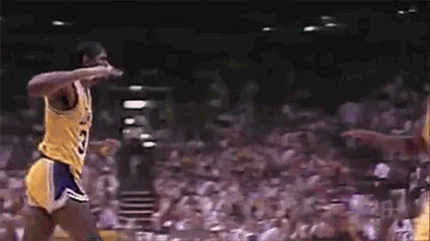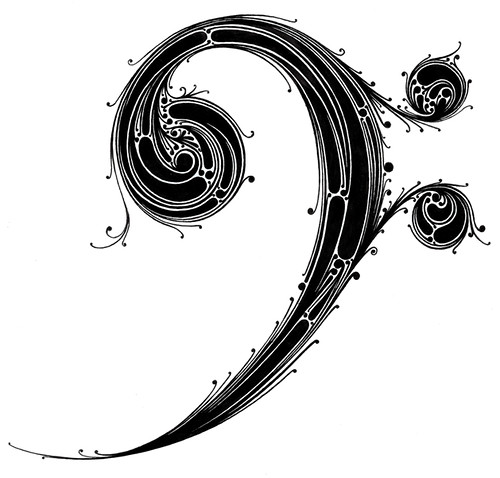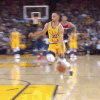Post#13 » by TrueLAfan » Wed Dec 23, 2009 5:51 pm
There are more threes taken and connected on at a higher percentage. But the net result, in terms of scoring and scoring efficiency, has been negligible. To be specific:
In 1981—the second year the NBA had the three—league eFG% was .489 and TS% was .552.
In 1986, league eFG% was .493 and TS% was .558.
In 1991, league eFG% was .487 and TS% was .550.
In 1996, league eFG% was .499 and TS% was .560. (Shortened three point line.)
In 2001, league eFG% was .473 and TS% was .534.
In 2006, league eFG% was .490 and TS% was .554.
In 2009, league eFG% was .500 and TS% was .560.
What strikes me isn't how much things have changed, but how similar they have remained. Even though we have a lot more threes taken and connected at a much higher percentage than we did in, say 1981...it hasn't resulted in greater efficiency. This is one reason I'm a little dubious when people talk about “A team from (give old NBA season) wouldn't be able to play today's game because of the three.” Sure they could. They'd have to adjust in the same way a modern team would have to adjust to the issues with more midrange shots and ensuing defensive issues...mainly more free throws, fouls, and foul related substitutions. As tsherkin notes, it's cyclical.
Ripping off a previous post of mine: Shooting the number of threes we do today is a stylistic choice. There are good and bad things about shooting more threes, and some changes that end up being effectively neutral as well. For instance:
Good
--1.5 x 3P% > Non three point shooting On the surface, it looks like you get more points shooting the three. So far this season, players are shooting .489 from inside the arc and .348 from three. If you took 1000 shots from each spot, you’d get 978 points from inside the line, and 1086 from distance…a substantial difference.
Bad
--Fewer offensive rebounds. The thing no one talks about. Three points shots are (much) less likely to have offensive rebounds. From 1979 to 1989, over 33% of rebounds were offensive rebounds. As the number of threes went up, offensive rebounding numbers went down. From 1999 to 2008, only 28.5% of rebounds were offensive rebounds.
Good
--Spreading the court more. This is the most obvious plus, at least on the surface. If you’ve got perimeter passing, you’ll get more isolation sets and better spacing. At least in theory. But this may be offset by…
Neutral
--Fewer Assists. There’s less ball movement with three point shooting. Total assist numbers are way, way down…from a peak of over 26 a game in the mid-80s to a little over 21 a game today. Pace doesn’t account for that 20% drop…the difference in pace from the mid 80s to today is around 10%. Percentage of made shots credited with assists stayed at around 61-62% from the 80s through the early 90s. It has dropped slightly in recent years. But it should probably drop more than that, because ...
Bad
--Fewer fouls/points scored at the line. Three point shots are less contested and less likely to receive fouls. Consequently, shot attempts on teams that shoot fewer threes get an extra push. It’s hard to determine the exact amount, but it’s considerable…as noted above, you get more points from shooting the three. And a smaller percentage of points comes from free throws now—from 1984-87, around 20.5% of points came from free throws. That dropped about 1 to 1.5% in the early 1990s…right when the numbers of threes attempted went up. It’s at about 19% now This offsets the idea that you get more points per shot from the three (as noted above), because the end result is…
Neutral (again)
--Virtually identical TS%. See numbers at the beginning of the post. The bottom line is that teams are not more or less efficient than they once were at producing points. The most efficient period in NBA history was, again, the early and mid-1980s. The least efficient since the three is the late 90s, by a lot. It was on an upswing in recent years, although we’re down again this season.
What does this all say? Offensive styles run in trends. Shooting more threes isn’t “better”…it’s more current. You could run a perfectly good offense that would be just as efficient and effective as any team's today and take 200 threes a season. But players are not taught to do this because--well, because they aren't. As shown above, it's not a matter of scoring effectiveness or offensive efficiency. The tendency by many posters is to think that something that is pretty much cyclical over time—like offensive style and production—is progressive. Basketball, like baseball, is not like that. There are all sorts of contributing factors to changes in style, but those changes don’t make something better—it just makes the thing different than it was.

































